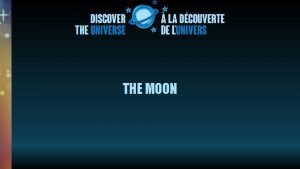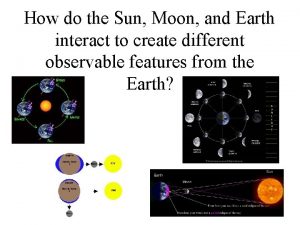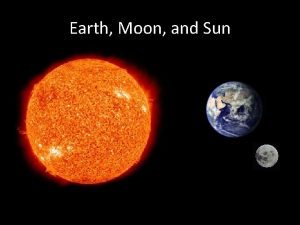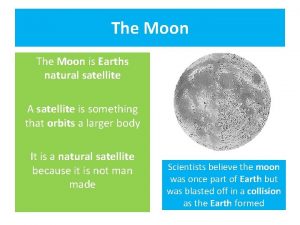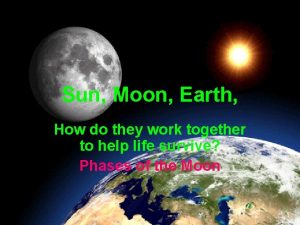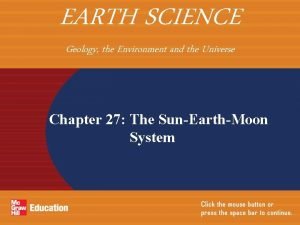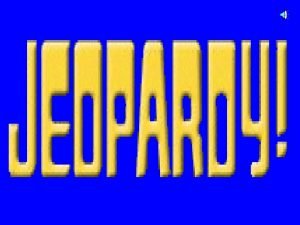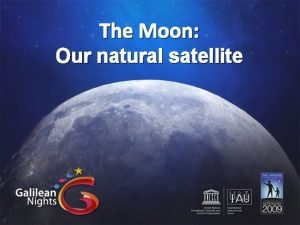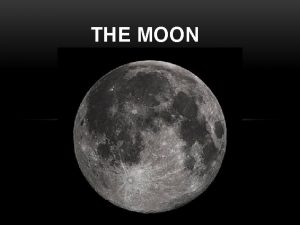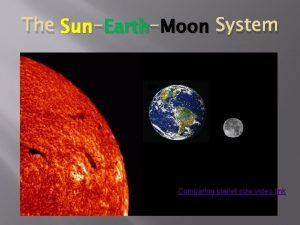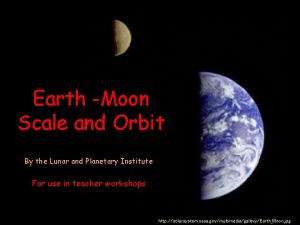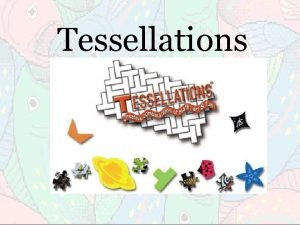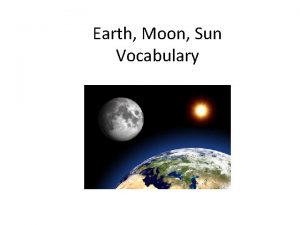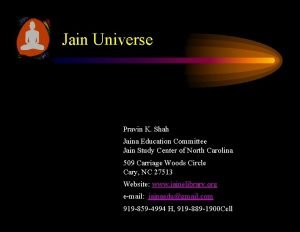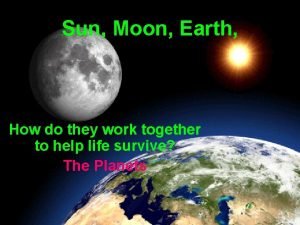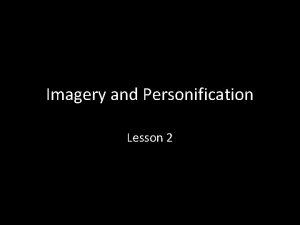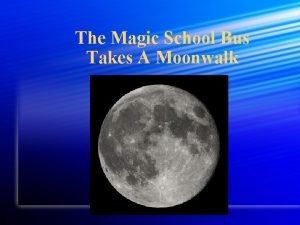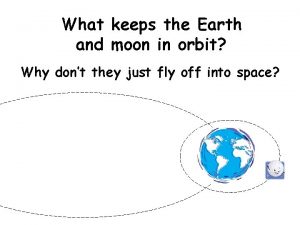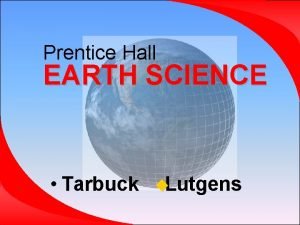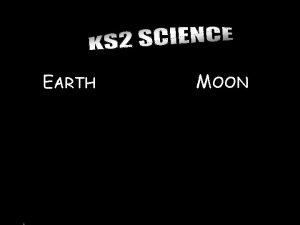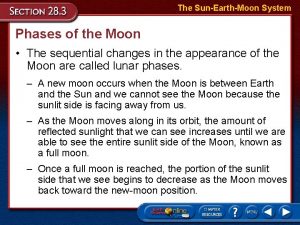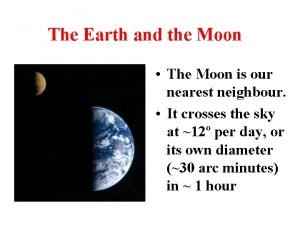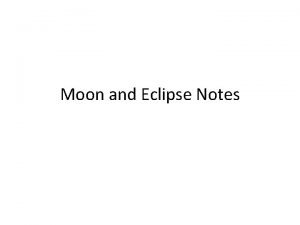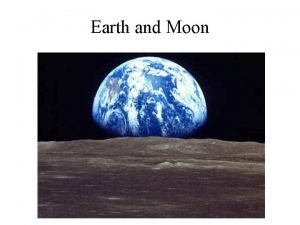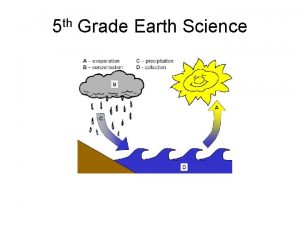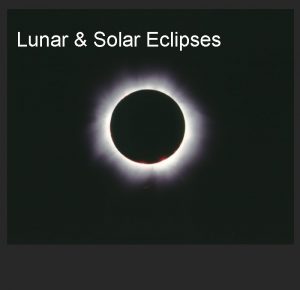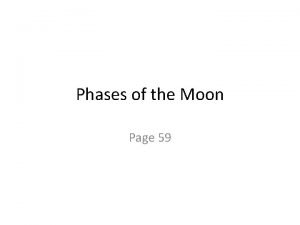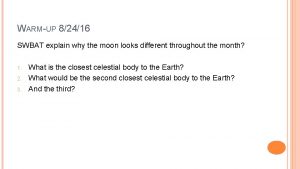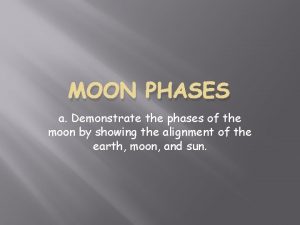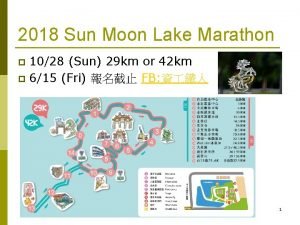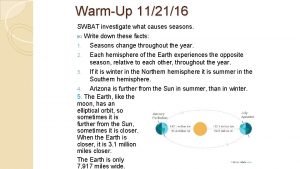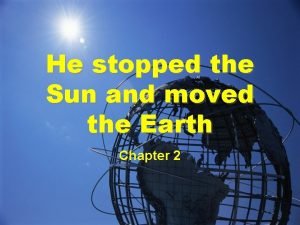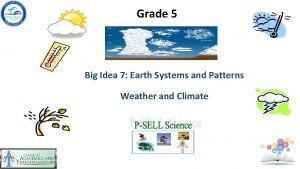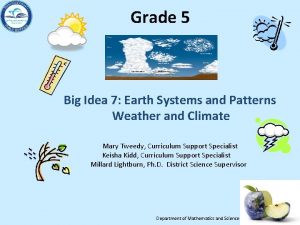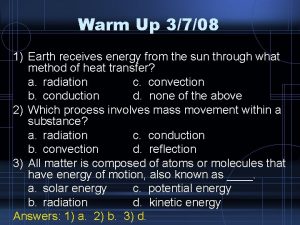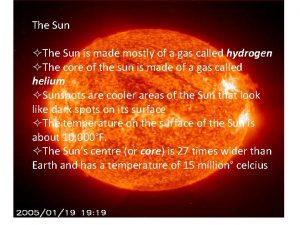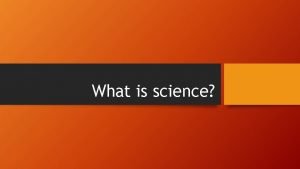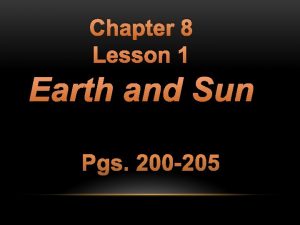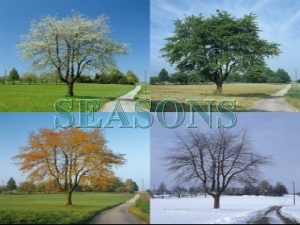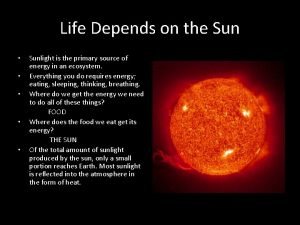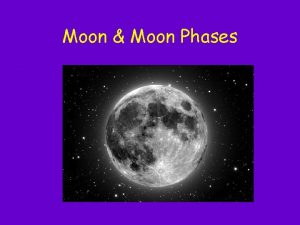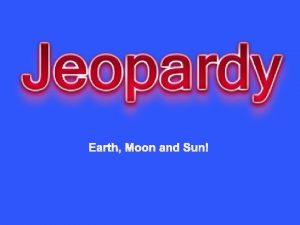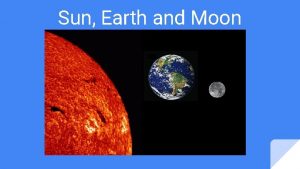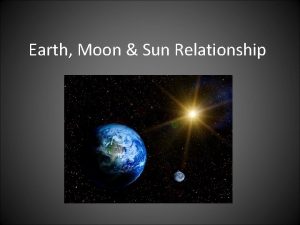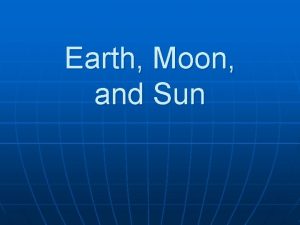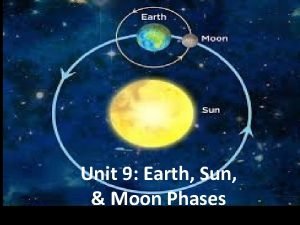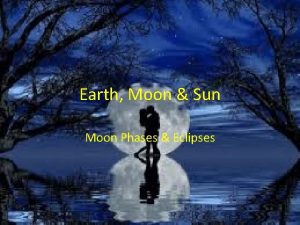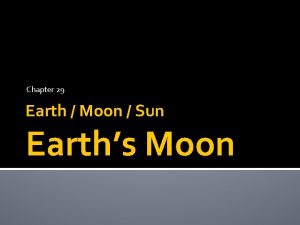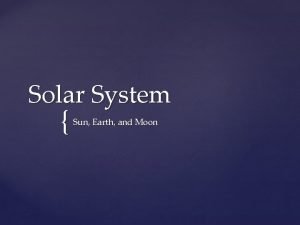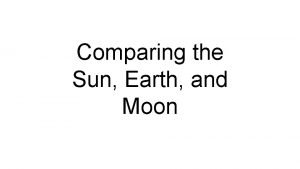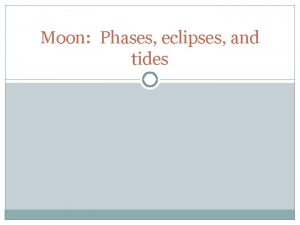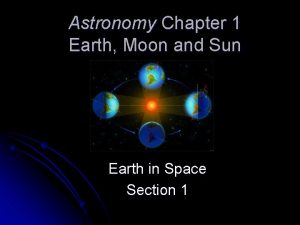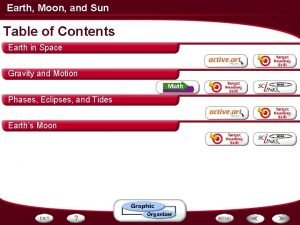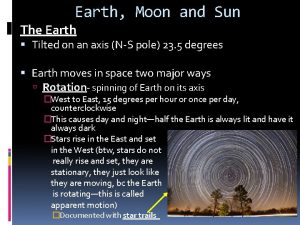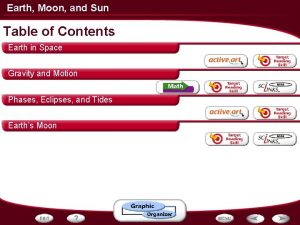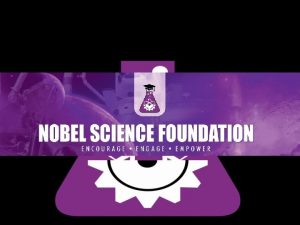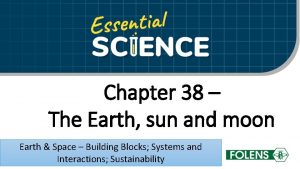Earth sun and Moon systems The Sun Is



















































- Slides: 51

Earth, sun and Moon systems

The Sun Is HOT!!!

Comparison of stars ØThe sun is an average star ØThe heat and light are the result of Nuclear Reactions constantly taking place in the sun. ØIt is in the center of our solar system.

ØBecause it is the largest body in our solar system, it’s gravity pulls all other planets in our solar system into orbit.

How does the Earth stay in Orbit around the Sun? � � � The answer is the Sun’s Gravity. The sun’s gravity pulls on Earth, keeping it in orbit. What if there was no gravity? Then Earth would fly off into space!!

Axis The imaginary line that passes through the Earth’s center and the North and South poles. Rotation: a spinning motion Rotation axis: the line on which an object rotates

Have you ever wondered why globes seem to be leaning? It’s because Earth’s imaginary axis it tilted. Tilted 23. 5 degrees to be exact.

Rotation is a spinning motion around an axis. Earth rotates counterclockwise (West to East)

Earth’s Rotation The Earth rotates on it’s axis every 24 hours The sun shines on only ½ of the Earth at a time. BEMS ½ of the Earth is experiencing night time. While the other ½ is in daylight!


Revolution Orbit: The path one object takes around another Earth’s orbit is not circular. It revolves in an oval shape called elliptical

• Revolution: Motion of one object around another • Earth revolves counterclockwise around the sun. • Because of revolution we have the 4 seasons • One Revolution = 365. 24 days or One Year

Reason for the Seasons

Seasons are caused by Earth’s revolution around the Sun 2. the unchanging tilt of the Earth’s axis. 1. Common Misunderstandings: Earth’s changing distance to the Sun does not cause seasons!

The north pole tilts towards the sun It is Summer time in countries in the Northern Hemisphere. It is Winter time in countries in the Southern Hemisphere.

The north pole tilts towards the sun When the North Pole Tilts towards the Sun the Northern hemisphere receives more Energy from the sun. This means: • Higher Temperatures • More Daylight



One more time…We have seasons because: 1. The tilt of the Earth’s axis 2. The revolution of Earth around the Sun.




Moon’s Features The Maria: Large Flat Dark areas on the moon The Highlands: Lightcolored areas on the Moon’s surface Crater: formed when objects from space crash into the moon Ejecta: debris that spreads out in rays from the impact area http: //www. youtube. com/watch? v=79 M 2 l. S VZi. Y 4

Phases of the Moon Vocabulary � Phase: the lit part of the moon or a planet that can be seen from Earth � Waxing phases: more of the Moon’s near side is lit each night � Waning phases: less of the Moon’s near side is lit each night


Waxing is RElaxing The Right side is the light side



: //www. brainpop. com/science/space/moonphases/preview. weml

Eclipses and Tides � Shadow – results when one object blocks the light that another object emits or reflects � Umbra – the central, darker part of a shadow where light is totally blocked � Penumbra – the lighter part of a shadow where light is partially blocked

Penumbra Umbra

SOLAR ECLIPSE - When the moon’s shadow appears on Earth’s surface, a solar eclipse is occurring

Review Questions: Ø What is a solar eclipse? A solar eclipse is an event in which the Moon casts a shadow on Earth. Ø Why does a solar eclipse occur only during a new moon? This is the only time when the Moon passes directly between the Sun and Earth.

Brain Pop � http: //www. brainpop. com/science/space/eclipse/pre view. weml

IMPORTANT FACTS 1) 2) 3) 4) A solar eclipse occurs only when the Moon moves directly between Earth and the Sun. Total solar eclipse – Moon appears to cover the Sun completely; lasts no longer than 7 minutes Partial solar eclipse – Can be seen from within the Moon’s penumbra Solar eclipse only occur during a new Moon, but do not occur every new Moon

LUNAR ECLIPSE When the moon moves into the shadow of the Earth’s surface, a Lunar eclipse is occurring

Review Questions: What is a lunar eclipse? A lunar eclipse is an event in which the Moon passes into Earth’s shadow. When can a lunar eclipse occur? Only during the Full Moon phase.

TIDES What is a tide? daily rise and fall of sea level. What affects tides on Earth? Tides on Earth are affected by both the Sun and the Moon.

SPRING TIDE: � � During full moon and new moon phases sun and moon gravitational effects produce higher high tides and lower low tides NEAP TIDE: � � � a week after spring tide sun earth, and moon form a right angle causes high tides to be lower and low tides are higher; occurs at firstquarter moon and

Where are tides the highest? On the side of Earth closest to the Moon and the side of Earth opposite it

Describe how the Moon is positioned relative to Earth and the Sun during spring and neap tides. During neap tides, the Moon, Earth and Sun are at right angles relative to one another. During spring tides, the Moon, Earth, and the Sun form a straight line in space Neap Tides Spring Tides

Vocabulary: � Solar Eclipse: occurs when the moon casts a shadow on the earth � Lunar eclipse: occurs when the Moon moves into Earth’s shadow � Tide: the daily rise and fall of sea level

Brain Pop � http: //www. brainpop. com/science/ea rthsystem/tides/preview. weml

IMPORTANT FACTS: • • It is primarily the Moon’s gravity that causes Earth’s oceans to rise and fall twice each day The Moon’s gravity is stronger on the side of Earth closer to the Moon and weaker on the side of Earth opposite the Moon. These differences cause tidal bulges High tides occur at tidal bulges and low tides occur between them

Did you know? � Have you ever eaten crab or lobster? If so, you know how delicious these shellfish can taste. However, did you know that these organisms and many others depend on the tides? Tides bring large volumes of nutrients from nearby mudflats and saltwater marshes, thus providing an abundance of food for crabs and lobsters, plus many of the birds, fish, and other organisms that also call the oceans home.






LAUNCH LAB You can see a shadow when an object blocks a light source. What happens to an object’s shadow when the object moves? 1) Get into a group of 3 2) Select an object 3) Shine a flashlight on the object, projecting its shadow on the wall. 4) While holding the flashlight in the same position, move the object closer to the wall – away from the light. Then, move the object toward the light. 5) Did the shadow have dark parts and light parts? Did these parts change?
 When the sun passes between the moon and earth
When the sun passes between the moon and earth How the sun moon and earth work together
How the sun moon and earth work together How do the sun moon and earth interact
How do the sun moon and earth interact Diagram of earth moon and sun
Diagram of earth moon and sun Whats a natural satellite
Whats a natural satellite Earth sun relationship
Earth sun relationship How does the sun moon and earth work together
How does the sun moon and earth work together The sun-earth-moon system worksheet answers lesson 1
The sun-earth-moon system worksheet answers lesson 1 Earth moon
Earth moon Which moon phase occurs directly before a new moon
Which moon phase occurs directly before a new moon Which moon phase occurs directly before a new moon
Which moon phase occurs directly before a new moon Moon sister moon calendar
Moon sister moon calendar Home.hiwaay.net/ krcool/astro/moon/moon tides/
Home.hiwaay.net/ krcool/astro/moon/moon tides/ How many days for a moon cycle
How many days for a moon cycle Earth and sun size comparison
Earth and sun size comparison Earth and moon to scale
Earth and moon to scale Spider web tessellation
Spider web tessellation Moon
Moon Moon and sun comparison
Moon and sun comparison 14 rajlok in jainism
14 rajlok in jainism How the sun and moon work
How the sun and moon work Chapter 2 imagery in poetry
Chapter 2 imagery in poetry Magic school bus sun and moon
Magic school bus sun and moon Why doesn't the moon fall on earth
Why doesn't the moon fall on earth 22.3 earth's moon
22.3 earth's moon How big is the moon compared to the earth
How big is the moon compared to the earth Earth moon
Earth moon Earth moon
Earth moon The different shapes of the moon you see from earth
The different shapes of the moon you see from earth Earth from moon
Earth from moon Earth from moon
Earth from moon Exo tim lunar dan solar
Exo tim lunar dan solar How far is the moon from earth
How far is the moon from earth Moon phases
Moon phases Moon phases when the sun is on the left
Moon phases when the sun is on the left Sun moon lake marathon
Sun moon lake marathon Hudhud ni aliguyon summary
Hudhud ni aliguyon summary Seasonal changes diagram
Seasonal changes diagram Who stopped the sun and moved the earth
Who stopped the sun and moved the earth Big idea 7 earth systems and patterns answer key
Big idea 7 earth systems and patterns answer key Big idea 7 earth systems and patterns
Big idea 7 earth systems and patterns When earth receives energy from the sun, ____.
When earth receives energy from the sun, ____. Light can travels from the sun toefl
Light can travels from the sun toefl The sun is made mostly of
The sun is made mostly of The sun warms the earth unevenly science or pseudoscience
The sun warms the earth unevenly science or pseudoscience Grade 7 natural sciences term 4
Grade 7 natural sciences term 4 Chapter 8 lesson 1 answer key
Chapter 8 lesson 1 answer key Caused by the tilting of the earth’s axis
Caused by the tilting of the earth’s axis Life on earth depends on the sun
Life on earth depends on the sun Hát kết hợp bộ gõ cơ thể
Hát kết hợp bộ gõ cơ thể Lp html
Lp html Bổ thể
Bổ thể
